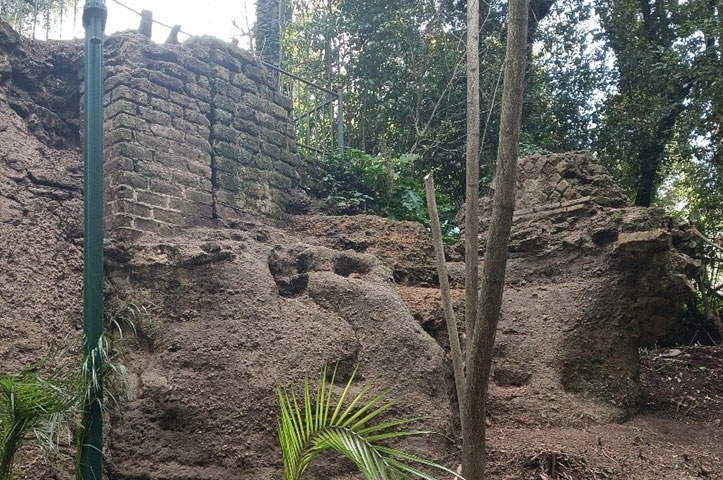In Naples , important archaeological discoveries were made at the Villa Floridiana during recent restoration and consolidation work on the ancient Mock Ruin C aves located in the villa in the heart of the Vomero district of Naples. The caves, which date back to the 19th century and are an important testimony to thelandscape architecture of the period, were the focus of an ambitious research project conducted as part of the NesIS (Neapolis Information System). The project, led by Professors Marco Giglio and Gianluca Soricelli, with the collaboration of the Campania Regional Museums Directorate and students from the University of Naples “L’Orientale,” aimed to map and document the ancient Roman remains found in the western area of the Neapolitan city.
During the preliminary stages of cleaning and consolidation of the masonry, necessary to enable high-precision laser scanner surveys, two distinctive phases of cave construction emerged. The first phase, dating back to the first century AD, saw the discovery of a series of pillars made of tufa blocks arranged in opus vittata. Among the most significant finds was a fragment of cocciopesto facing, tangible evidence of the ancient decorative art of Roman times. The next phase of transformation of the structures, which occurred at a later period, saw the original pillars integrated into a kind of “fake ruin.” At this stage, the pillars were doubled using tufa blocks, while the walls were covered with lava stone and plaster in faux opus reticulatum, giving the caves a striking appearance of ancient ruins.
During the restoration work, portions of nineteenth-century lava stone cladding were also identified, which were added in later periods to give the caves an additional charm. Among the ceramic artifacts unearthed during the cleaning operations were fragments of African sigillata and amphorae, which testify to the intense commercial and cultural activity that characterized ancient Naples. Once the work of securing and consolidating the caves is finished, attention will shift to the documentation and enhancement of the archaeological complex. To this end, three-dimensional high-definition, photogrammetric surveys and a virtual tour of the caves are planned, curated by Professor Angela Bosco and Dr. Rosario Valentini of the University of Naples “L’Orientale.”
The archaeological discoveries made during the restoration work of the Caves of the Villa Floridiana represent an important contribution to the knowledge of the Roman past of the city of Naples, confirming its central role in the Italian archaeological scene.
“These archaeological discoveries,” says Minister of Culture Gennaro Sangiuliano, "enrich our knowledge of the Vomero neighborhood in the Roman Age and offer new research insights to reconstruct the history of the city and the forms of occupation of the western hillside of Naples. In a few months, with great effort, we managed to give decorum to the Villa Floridiana. I have personally visited several times to check the progress of the works and more we will do so that this place will return to the splendor it deserves
“The intense activity of securing, restoring and enhancing the Floridiana, which began last October,” emphasizes MiC Museums General Director Massimo Osanna, “has been accompanied since the beginning by an important research project aimed at learning about the history and topography of the place in ancient times. Thanks to collaboration with the Universities of Orientale and Molise, important new data have already emerged documenting the probable presence of a Roman villa, the remains of which were reused in part for the construction of the ’Mock Ruin Caves’ of the 19th-century garden (1817-1819) designed by architect Antonio Niccolini. A new season for one of Italy’s most beautiful historic gardens, characterized by an approach that combines knowledge, maintenance, restoration and enjoyment to make this place increasingly open and accessible to the community and the growing public.”
 |
| Naples, major archaeological discoveries at the excavations of Villa Floridiana |
Warning: the translation into English of the original Italian article was created using automatic tools. We undertake to review all articles, but we do not guarantee the total absence of inaccuracies in the translation due to the program. You can find the original by clicking on the ITA button. If you find any mistake,please contact us.